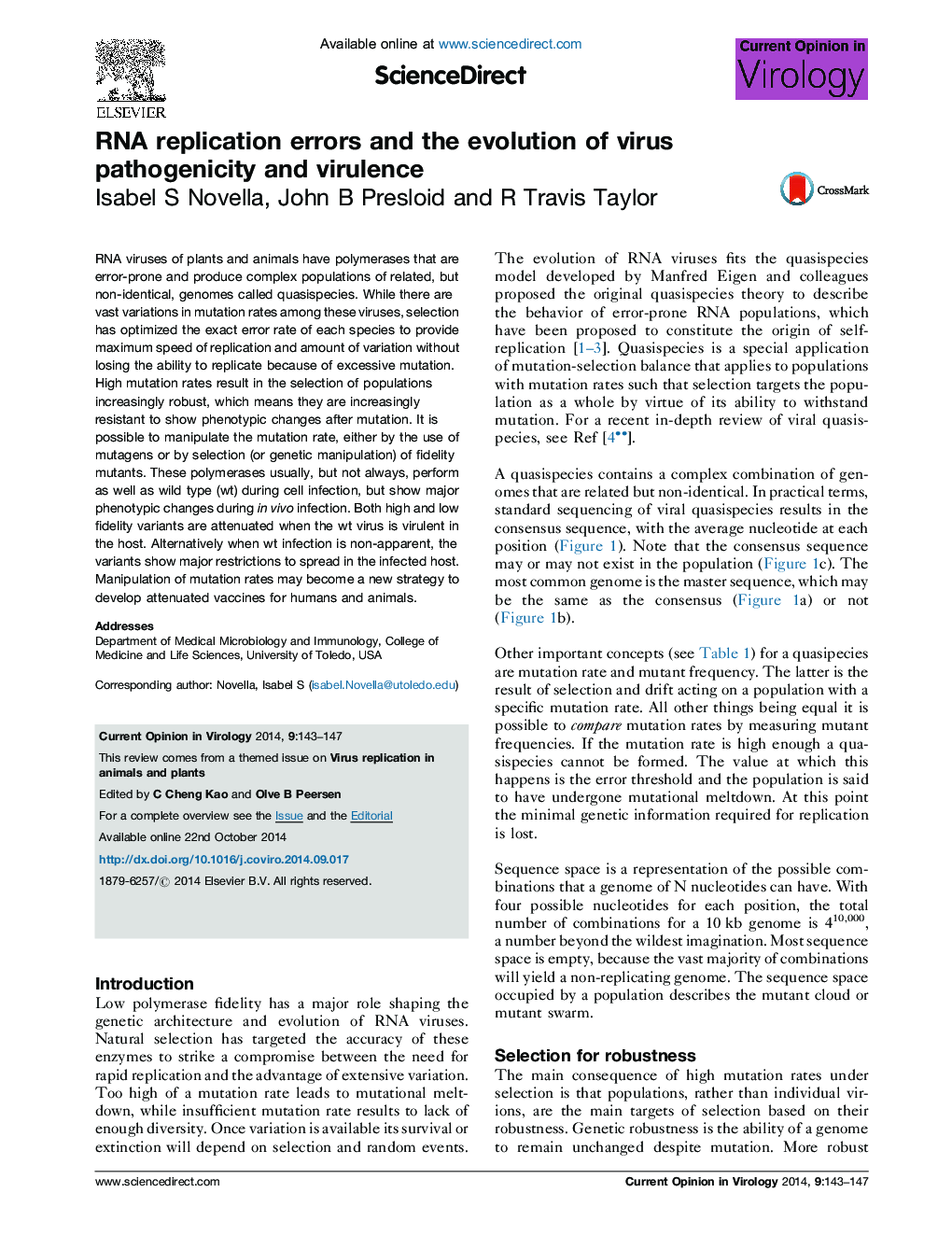| Article ID | Journal | Published Year | Pages | File Type |
|---|---|---|---|---|
| 2473332 | Current Opinion in Virology | 2014 | 5 Pages |
•Quasispecies theory is a case of mutation-selection balance at high mutation rates.•Viral genomes evolve toward higher robustness and more stability despite mutation.•Polymerase fidelity in RNA viruses is under selection.•Fidelity mutants may become a new kind of attenuated vaccines.
RNA viruses of plants and animals have polymerases that are error-prone and produce complex populations of related, but non-identical, genomes called quasispecies. While there are vast variations in mutation rates among these viruses, selection has optimized the exact error rate of each species to provide maximum speed of replication and amount of variation without losing the ability to replicate because of excessive mutation. High mutation rates result in the selection of populations increasingly robust, which means they are increasingly resistant to show phenotypic changes after mutation. It is possible to manipulate the mutation rate, either by the use of mutagens or by selection (or genetic manipulation) of fidelity mutants. These polymerases usually, but not always, perform as well as wild type (wt) during cell infection, but show major phenotypic changes during in vivo infection. Both high and low fidelity variants are attenuated when the wt virus is virulent in the host. Alternatively when wt infection is non-apparent, the variants show major restrictions to spread in the infected host. Manipulation of mutation rates may become a new strategy to develop attenuated vaccines for humans and animals.
